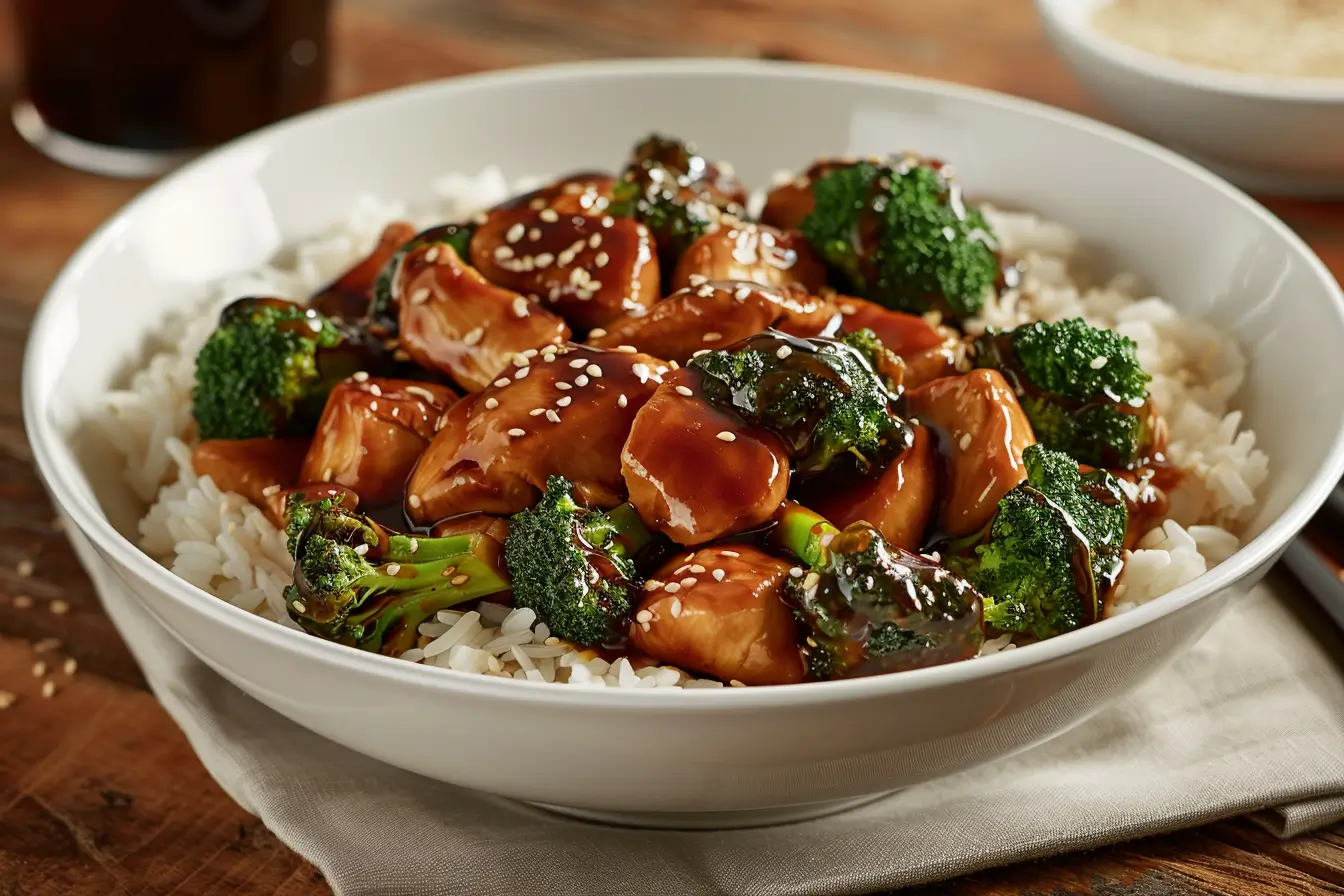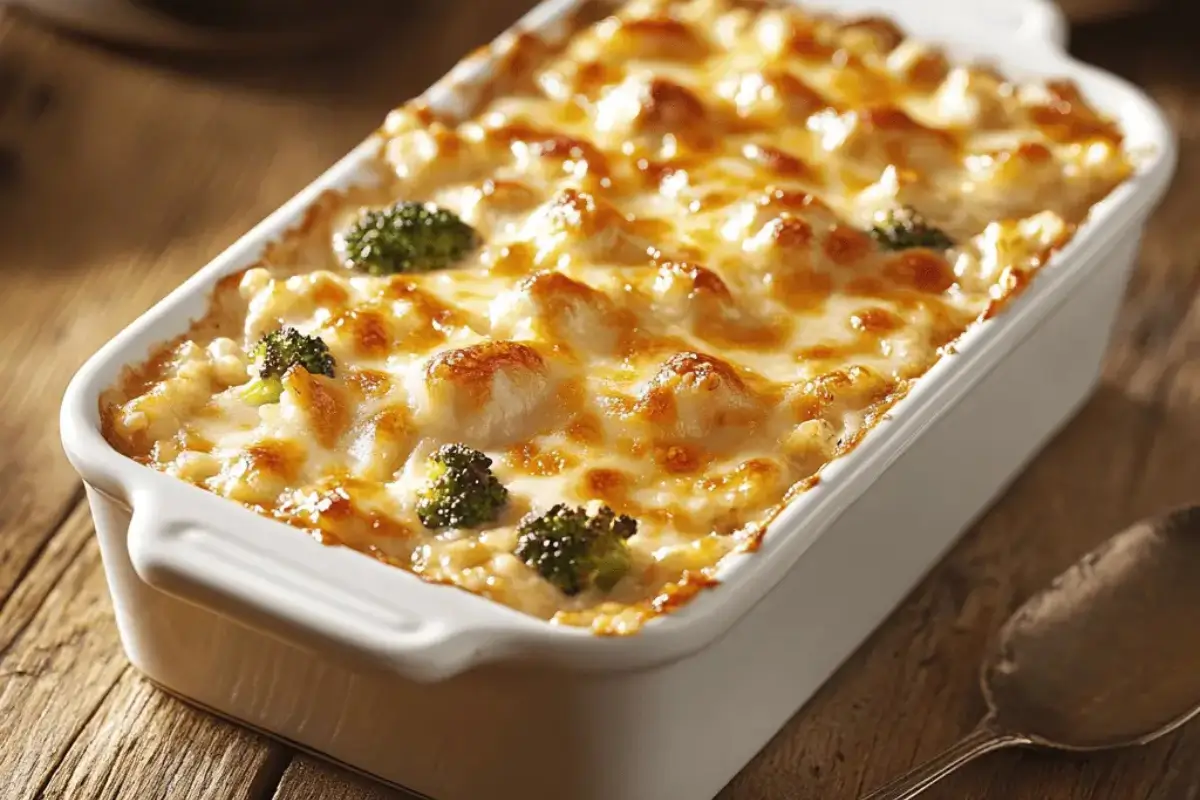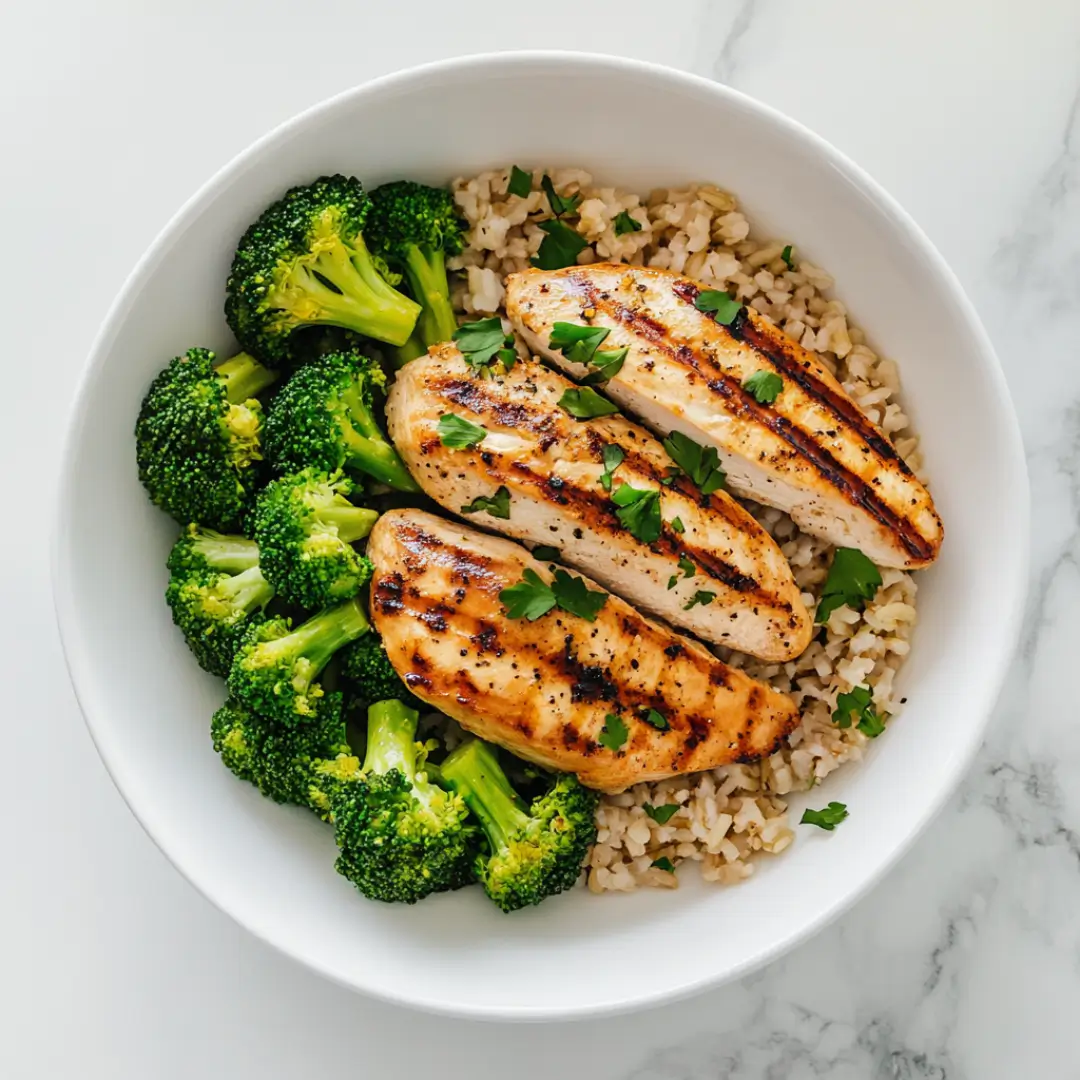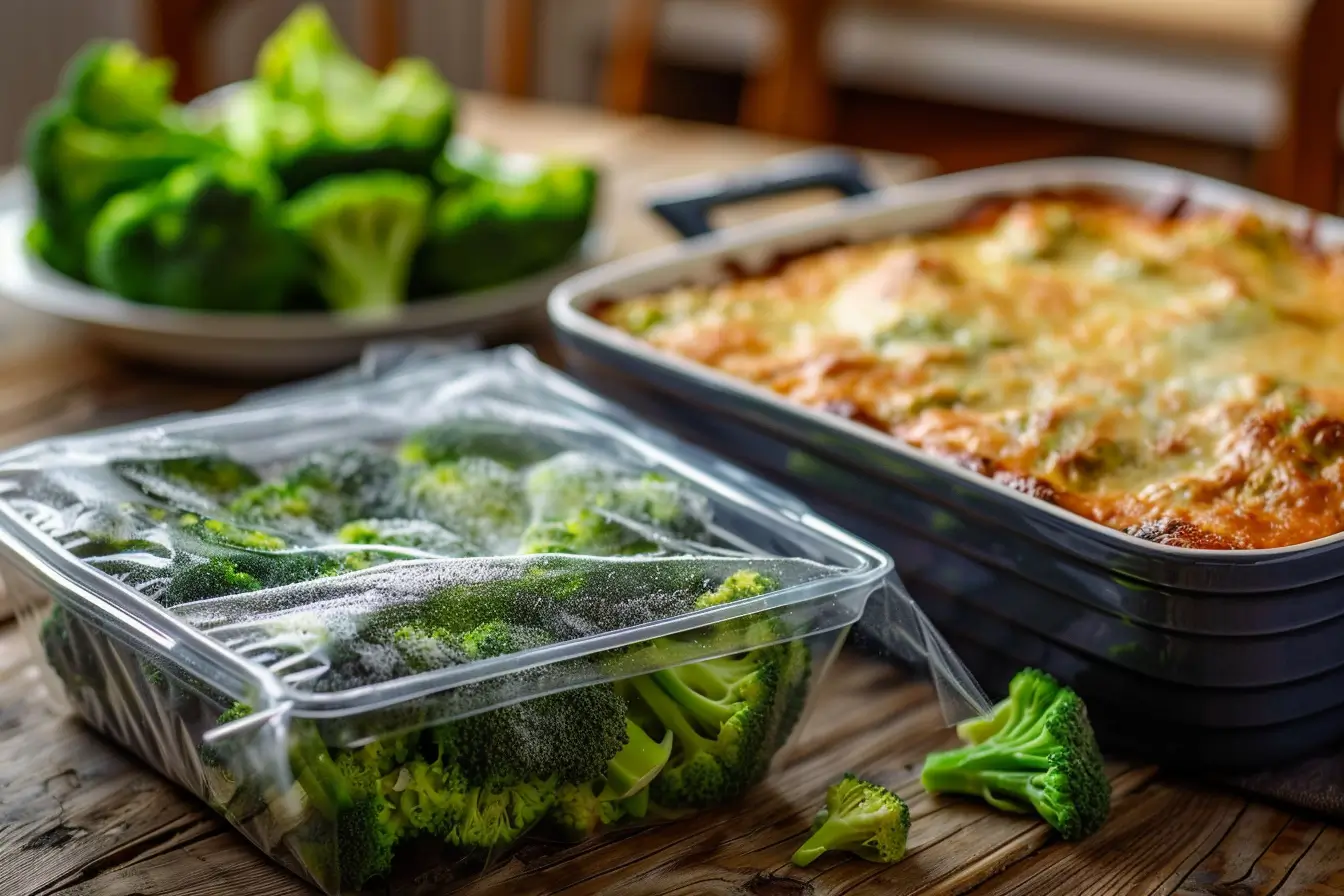When it comes to popular Chinese-inspired dishes, chicken and broccoli always tops the list. Not only does it feature a perfect blend of tender chicken, crisp broccoli, and a savory sauce, but it also offers a comforting and satisfying meal for all occasions. In addition to its delightful taste, the combination of ingredients ensures a wholesome dining experience. Furthermore, this dish has won hearts globally with its simplicity and deliciousness. On the other hand, have you ever wondered what chicken and broccoli sauce is made of? Whether it’s the rich brown sauce, a creamy white alternative, or a fiery spicy version, the secret lies in a mix of simple yet flavorful ingredients. In this article, we’ll not only explore the components but also delve into the variations and health aspects of this beloved sauce. So, without further ado, let’s dive right in!
Understanding Chicken and Broccoli Dishes
The History and Popularity of Chicken and Broccoli
Chicken and broccoli stir-fry is a modern favorite, often associated with Chinese-American cuisine. Its roots come from traditional Chinese cooking techniques that focus on quick, healthy meals. Over time, the dish has changed to suit various palates, adding regional twists and fusion influences.
Origins and Cultural Significance
In Chinese cuisine, chefs commonly stir-fry with sauces like soy or oyster sauce to preserve the freshness of ingredients. Moreover, the combination of chicken and broccoli gained widespread popularity in Americanized Chinese restaurants during the mid-20th century.
Global Variations of Chicken and Broccoli
The dish has traveled across borders, with each culture giving it a unique touch. For example, in Japan, it may feature teriyaki flavors, while in Thailand, it pairs with spicy chili sauces. This adaptability is why chicken and broccoli remains versatile and appealing.
Key Ingredients in Chicken and Broccoli Sauce
What Goes Into Chicken and Broccoli Sauce?
The secret to an irresistible chicken and broccoli dish lies in its sauce. A mix of savory, sweet, and umami flavors ensures it complements the ingredients perfectly. Let’s break down the key components.
The Core Ingredients
- Soy Sauce: This ingredient provides the essential salty and umami base.
- Oyster Sauce: It adds a rich, slightly sweet depth to the sauce.
- Garlic and Ginger: These aromatics give the dish its authentic Asian flavor.
- Cornstarch: This thickener creates a smooth texture.
- Broth: Often chicken or vegetable broth, it forms the liquid base while enhancing flavor.
- Sesame Oil: A finishing touch that adds a nutty aroma.
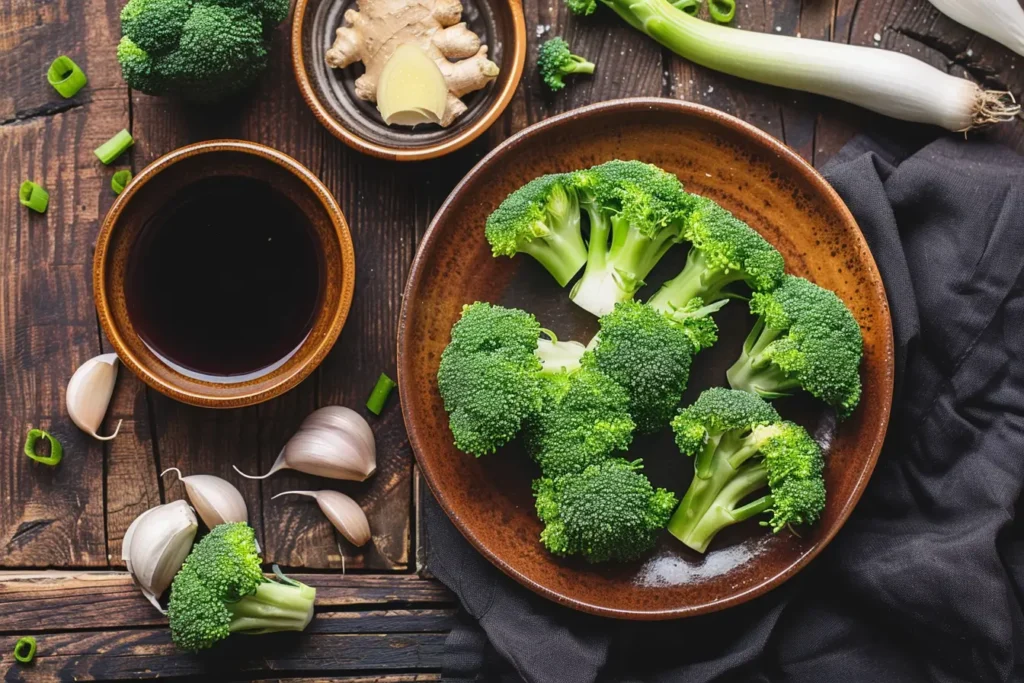
Customizable Additions
For those who enjoy experimenting, here are some optional ingredients:
- Hoisin Sauce: For a sweeter, tangy twist.
- Rice Vinegar: This adds acidity to balance the flavors.
- Sugar or Honey: A little sweetness can enhance the dish.
- Chili Flakes or Sriracha: These bring a spicy kick.
Balancing the Flavors
Achieving the perfect balance in chicken and broccoli sauce requires care. The saltiness from soy sauce, sweetness from sugar, and richness from oyster sauce work together to create harmony. Adjust these elements based on your preferences.
Types of Sauces Used in Chicken and Broccoli Dishes
Exploring Sauce Varieties for Chicken and Broccoli
The beauty of chicken and broccoli lies in its adaptability. While the dish’s main ingredients remain consistent, the sauces offer endless possibilities. Let’s dive into the most popular types of sauces for this classic dish.
Brown Sauce
This sauce is a favorite in Chinese-American cuisine, known for its savory richness.
- Ingredients: It includes soy sauce, oyster sauce, garlic, ginger, and chicken broth, with cornstarch added to thicken it.
- Flavor Profile: It has a deep, umami flavor with a touch of sweetness.
- Versatility: Brown sauce works well not only with chicken and broccoli but also with beef and broccoli stir-fry.
- FAQ Tie-in: What is the brown sauce in Chinese food made of? It mainly consists of soy sauce, oyster sauce, aromatics, and a cornstarch slurry for consistency.
White Sauce
For those who prefer a milder option, white sauce offers a creamy and subtle alternative.
- Ingredients: It’s a combination of chicken stock, cornstarch, and aromatics like garlic, without soy sauce.
- Flavor Profile: Its gentle and savory taste allows the natural flavors of chicken and broccoli to shine.
- FAQ Tie-in: What is white chicken sauce made of? This sauce uses chicken broth, cornstarch, and minimal seasoning for a light, creamy texture.
Garlic Sauce
Garlic lovers enjoy this bold and aromatic variation.
- Ingredients: Fresh garlic, soy sauce, sesame oil, and a touch of sugar balance the flavors.
- Flavor Profile: Its pungent and slightly sweet taste pairs beautifully with the vegetables.
Spicy Variations
For those who love heat, spicy sauces are an excellent choice.
- Ingredients: These sauces often include chili paste, soy sauce, and a splash of vinegar.
- Flavor Profile: A fiery and tangy taste elevates the dish. These sauces can be adjusted for different spice levels.
Health Considerations
Is Chicken and Broccoli a Healthy Choice?
Chicken and broccoli dishes are widely regarded as a healthy option, but the sauce can impact the nutritional profile. Let’s look at the benefits and potential downsides.
Nutritional Profile of Chicken and Broccoli
- Chicken: This lean protein source is low in fat and high in essential amino acids.
- Broccoli: Packed with fiber, vitamins C and K, and antioxidants, broccoli is a nutrient powerhouse.
- Combination: Together, they create a balanced meal with protein, fiber, and essential nutrients.
The Impact of Sauces on Health
The sauce can enhance flavor but may add calories, sodium, and sugar.
- Brown Sauce: It often contains high sodium levels due to soy sauce.
- White Sauce: It’s generally lower in sodium but might lack the flavor depth of other options.
- Spicy Sauces: While they may include sugar and sodium, they can boost metabolism thanks to chili content.
Making Healthier Choices
Here are some tips to keep your chicken and broccoli dish nutritious:
- Use low-sodium soy sauce or tamari.
- Replace cornstarch with arrowroot powder for thickening.
- Sweeten with natural alternatives like honey or stevia.
- Reduce the amount of oil to lower calories. Mindful portion sizes can also maintain balance.
FAQ Tie-In
Is chicken and broccoli Chinese food healthy? Yes, it can be. When prepared with lean proteins, fresh broccoli, and a low-sodium sauce, it’s a wholesome meal.
Homemade vs. Restaurant-Style Sauces
Comparing Homemade and Restaurant-Style Chicken and Broccoli Sauces
When it comes to chicken and broccoli, the sauce can make all the difference. Should you make it at home or rely on restaurant-style preparations? Let’s weigh the pros and cons of each.
Homemade Sauces
Advantages:
- Control Over Ingredients: Adjust the salt, sugar, and oil content to your liking.
- Customization: Add or omit ingredients to suit dietary preferences or allergies.
- Fresher Taste: Fresh ingredients often give homemade sauces a vibrant flavor.
Challenges:
- Time-Consuming: Making sauce from scratch takes more time.
- Skill-Dependent: It might take practice to perfect the flavor balance.
Key Ingredients: Homemade sauces usually include soy sauce, broth, garlic, ginger, and optional additions like honey or chili paste.
Restaurant-Style Sauces
Advantages:
- Convenience: Pre-made sauces save time and effort.
- Consistency: Restaurants use tested recipes that guarantee flavor.
Challenges:
- High Sodium and Sugar Content: Many restaurant sauces use these to enhance taste.
- Additives and Preservatives: They may include artificial flavor enhancers and thickeners.
What to Expect: Restaurant sauces are often richer and thicker, featuring a strong umami punch from MSG or similar ingredients.
Tips for the Best of Both Worlds
- Use restaurant sauces as inspiration, but prepare them at home to control ingredients.
- Opt for healthier pre-made sauces available in stores. Experiment with different brands to find a balance of flavor and nutrition.
Frequently Asked Questions (FAQs)
Answering Common Questions About Chicken and Broccoli Sauce
To clarify any doubts, here are answers to common questions about chicken and broccoli sauce.
What is the brown sauce in Chinese food made of?
Brown sauce is a staple in many Chinese dishes. It’s made with soy sauce, oyster sauce, chicken broth, garlic, and ginger. Cornstarch thickens the mixture, creating a silky texture.
Is chicken and broccoli Chinese food healthy?
Yes, it can be! Chicken and broccoli is a low-calorie dish packed with protein and nutrients. The healthiness depends on the sauce. Choosing a homemade, low-sodium sauce makes it even better.
What is the sauce for broccoli beef made of?
The sauce for broccoli beef is similar to chicken and broccoli sauce. It typically includes soy sauce, oyster sauce, garlic, and ginger. Beef broth may replace chicken broth to complement the beef.
What is white chicken sauce made of?
White sauce is a lighter, creamy alternative. It’s made with chicken broth, cornstarch, and garlic. Unlike brown sauce, it skips soy sauce, making it less salty and milder in taste.
How can I make a gluten-free version of the sauce?
To make a gluten-free chicken and broccoli sauce:
- Use tamari or a gluten-free soy sauce alternative.
- Replace cornstarch with arrowroot powder or tapioca starch.
- Check all ingredients for hidden gluten, especially in pre-made sauces. Read labels carefully to avoid accidental exposure.
Are there vegan alternatives for the sauce ingredients?
Absolutely! Swap the chicken broth for vegetable broth and use plant-based oyster sauce (usually made from mushrooms). Replace honey with agave syrup for a vegan-friendly sweetener. Ensure all other ingredients are free from animal products.
How to Pair Chicken and Broccoli Sauce With Sides
Complementing Chicken and Broccoli with the Perfect Sides
To make your chicken and broccoli dish a complete meal, pairing it with the right sides is essential. The right choice not only complements the flavors but also enhances the nutritional value of your meal.
Popular Sides to Serve
- Steamed Rice: The classic pairing, steamed white or brown rice absorbs the savory sauce beautifully.
- Noodles: Soft noodles, such as lo mein or rice noodles, create a hearty and satisfying option.
- Quinoa: For a healthier alternative, quinoa provides extra protein and fiber while soaking up the flavors.
- Stir-Fried Vegetables: A medley of carrots, snap peas, and bell peppers adds color, crunch, and additional nutrients.
- Cauliflower Rice: A low-carb substitute, cauliflower rice offers a lighter alternative that pairs well with the rich sauce.
Tips for Balancing Flavors
First and foremost, use lightly seasoned sides to let the sauce truly shine as the star of the meal. Moreover, this approach ensures the flavors of the sauce take center stage without being overshadowed. Additionally, consider incorporating sides with contrasting textures, such as crispy spring rolls or crunchy slaw, to not only add variety but also bring excitement and balance to the dish. Furthermore, these textural contrasts can elevate the overall dining experience by providing a satisfying mix of flavors and sensations. Finally, ensure your side dishes match the sauce’s intensity so that the flavors remain harmonious and well-balanced, creating a perfectly cohesive meal.
Wrapping Up the Secrets of Chicken and Broccoli Sauce
Chicken and broccoli is a timeless dish that effortlessly brings together tender chicken, fresh broccoli, and a variety of delicious sauces. Not only does it satisfy cravings with its wholesome ingredients, but it also adapts well to different dietary preferences. In addition, it offers a balance of flavors that appeals to a wide range of palates. Moreover, with options ranging from savory brown sauces to creamy white alternatives, the versatility of this dish ensures there’s something for everyone.
To fully appreciate this beloved dish, it’s important to understand the key ingredients and health considerations. By doing so, you can enjoy it while making it healthier and more tailored to your tastes. Furthermore, whether you aim to recreate restaurant-style flavors at home, experiment with creative twists, or explore gluten-free and vegan options, the possibilities are truly endless. Ultimately, this dish serves as a perfect starting point for both novice and experienced cooks who are looking to create a satisfying and adaptable meal.
Key Takeaways
- The sauce is the heart of chicken and broccoli dishes, with options ranging from brown and white to spicy garlic variations.
- Homemade sauces allow for better control over health and flavor.
- Customizing ingredients like soy sauce alternatives or vegetable-based broths makes the dish adaptable for various dietary needs.
Engaging Question for Readers
What’s your favorite way to make chicken and broccoli sauce at home? Have you tried experimenting with different sauce variations? Share your tips and experiences in the comments below—we’d love to hear from you! For more inspiration, check out our recipe for Chicken Broccoli Pasta Casserole.


